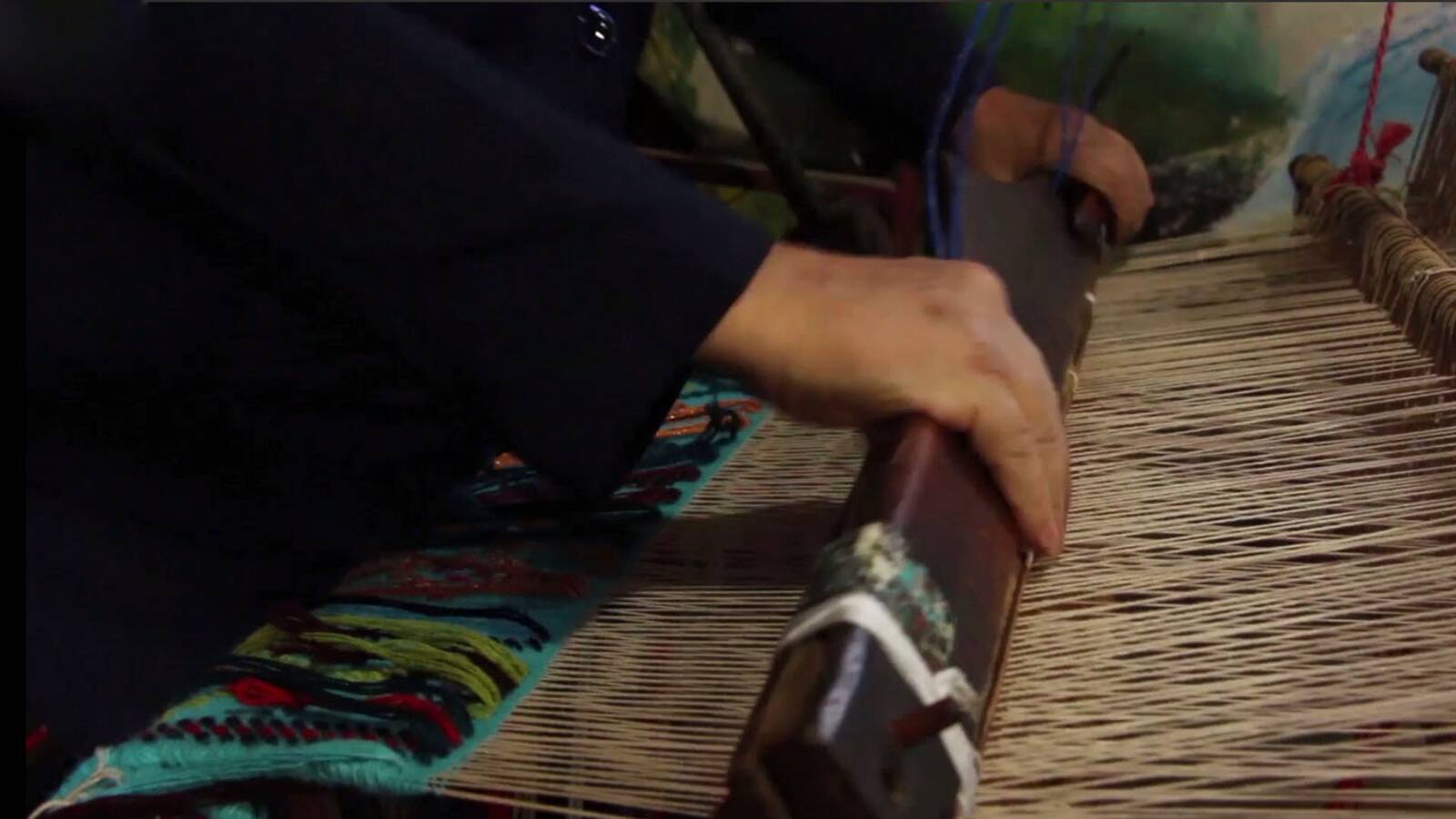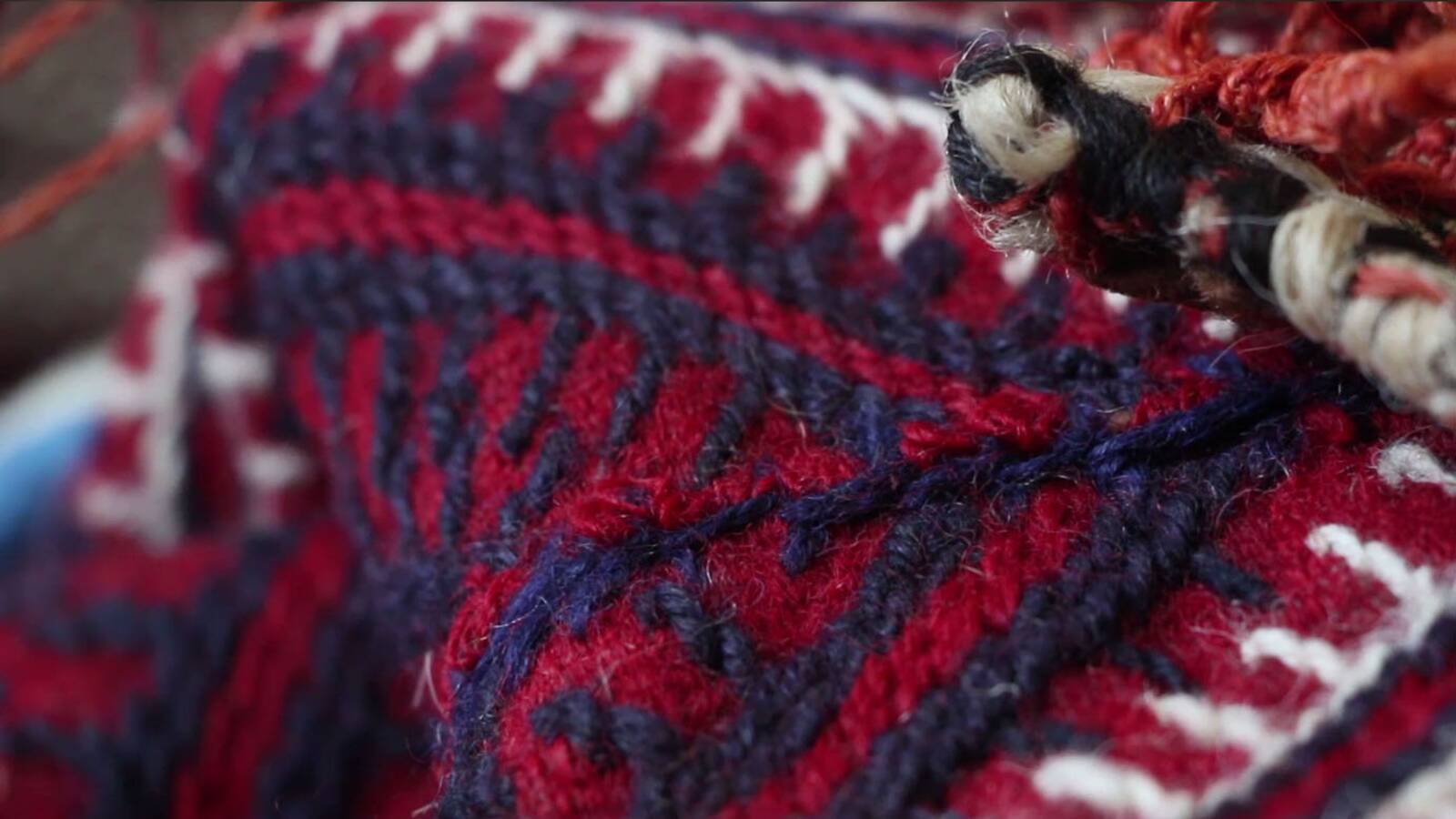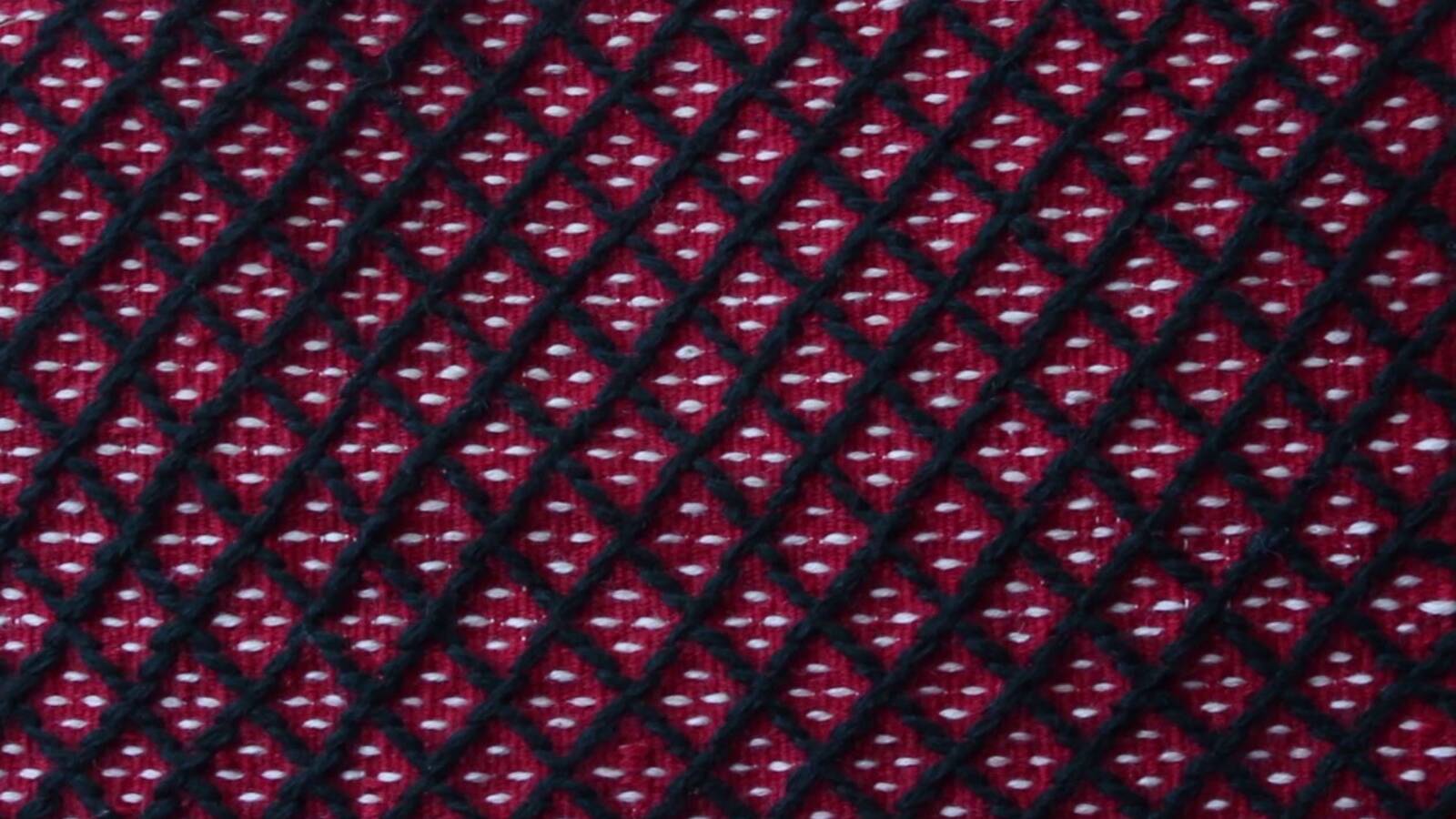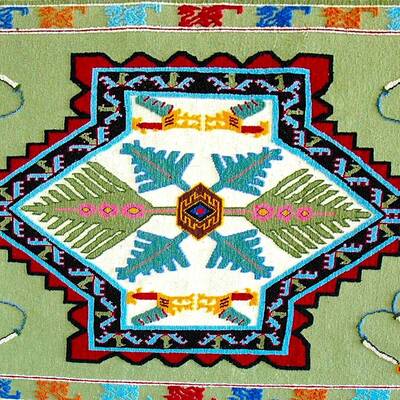
Traditional Kilims of Metekazin
Metekazin is one of the most important villages of Mazandaran province where there are a variety of traditional handwoven products; Kilim, Kilimcheh (small kilim), Jajim, black tent, Sachim (a kind of woolen fabric), Choqa (a kind of fabric), tablecloth and Saq Pich are among the main traditional handwoven products of Metekazin. However, the traditional Kilimcheh of Metekazin village is much more well-known and high-quality in comparison with other handicrafts. Special patterns and motives used in fabricating this artistic and practical product are the main identifying factor, its originality and distinction from other handwoven products in other regions of Iran. It is therefore highly in demand among people.
Weaving is a kind of female occupation which is often done during the cold seasons when women become free from the agriculture and gardening responsibilities. Kilimcheh is woven on the traditional textile machine in two-Verdi style. This product is made with different patterns, colors and names in different parts of Mazandaran however, the technology of manufacturing is the same everywhere. It is between 100 to 150 centimeters long and between 60 to 90 centimeters wide. Traditionally, weavers sewed the kilims side by side in order to make a wider one. The colors are various and bright, such as buff, green, red, black blue, yellow, black and azure. Today, the color of the field of kilim is mostly lacquer color and it is not as divers as it used to be. They are often used as ground cloth, bed cloth, Korsi cloth, mat and saddlebag.
The pattern of the typical kilimcheh is quite traditional driven mainly from the surrounding nature. Map has no use in weaving Metekazin kilims and every pattern is completely created by imagination. The motives are mostly geometric and abstract and they are rarely carved, naturalistic or figurative, even if the weaver uses the emulation and inspiration from the nature as the basis of their work. The patterns are divided into five main categories by the appearance, local names and traditional implications: 1. The pure geometric motives, which are the main pattern we can see on the kilims of this region; they include square, triangle and diamond among which the most famous is four-tower motif meaning four seasons in the local dialect; 2. Geometric- naturalistic patterns like simplified forms of mountain and sun, among which the most famous is the sun of Tir meaning the sun ray; 3- geometric- floral motives the most famous of which is Daddari meaning the dense of trees; 4- geometric-animal motives the most famous of which Panjook (the chicken pie), Changeli (animals’ claw) and Hili (beehive); and 5- instrument-geometric motives, the most famous of which is the bride’s hair.







